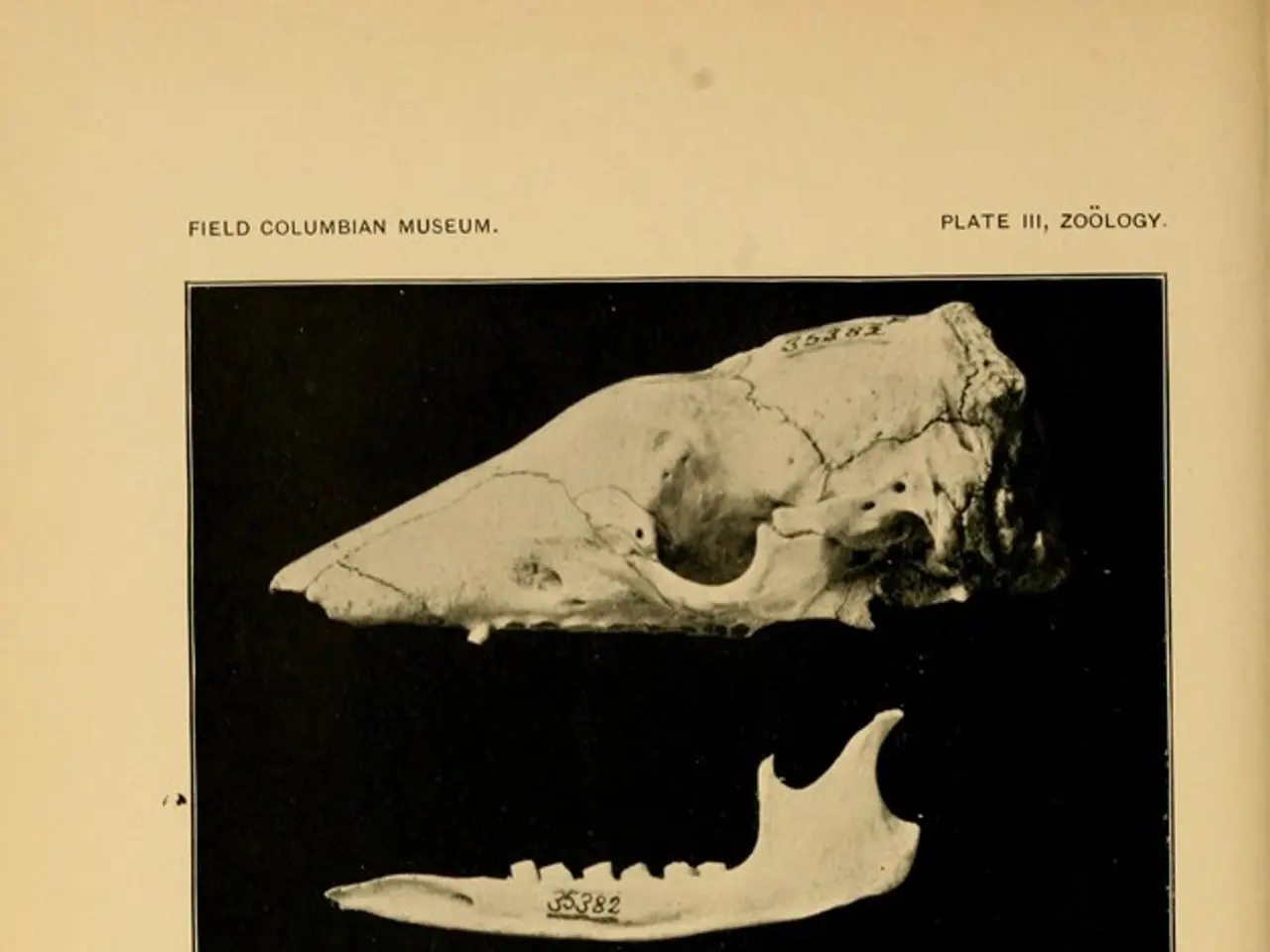Investigating the Role of Stem Cells in Maintaining Joint Health and Enhancing Mobility During Aging Processes
In the realm of joint health, stem cell therapy is an active and evolving field that shows promising but still emerging evidence for safety and clinical symptom improvement, particularly in treating osteoarthritis (OA). This innovative treatment approach, using mesenchymal stem cells (MSCs) as the primary focus, offers a minimally invasive alternative that may delay or prevent surgery, appealing to middle-aged adults who want to stay active and postpone invasive interventions.
Recent advancements in stem cell therapy for OA include the combination of genicular artery embolization (GAE) with MSCs. A study published in 2021 demonstrated that this treatment significantly reduced pain and symptoms in patients with knee osteoarthritis over 12 months, as measured by WOMAC and VAS scores [1]. This minimally invasive procedure targets small blood vessels to reduce pain signals, while stem cells contribute anti-inflammatory and immunomodulatory effects, suggesting a novel treatment avenue with established safety profiles.
A comprehensive review of 28 clinical studies involving intra-articular MSC therapy for OA and focal cartilage defects reported that MSC therapy appears safe with no major adverse events [2]. Most studies showed improvement in clinical outcomes after an average of about 2 years follow-up. However, the evidence quality was poor with notable heterogeneity, making it difficult to draw firm conclusions about efficacy or optimal treatment parameters.
Emerging research on MSC-derived exosomes (cell-secreted vesicles) highlights their potential to enhance chondrocyte proliferation, reduce inflammation, and promote cartilage regeneration. These exosomes carry growth factors and miRNAs that stimulate cartilage repair mechanisms. Animal studies demonstrate significant reduction in chondrocyte apoptosis and improved cartilage tissue scores after exosome treatment, suggesting a promising future direction for OA therapy [3][4].
Combining regenerative treatments like stem cells or platelet-rich plasma with exercise therapy may further enhance pain relief and functional outcomes in knee osteoarthritis, though specific evidence on combined protocols is less well studied and requires more research [5].
While current evidence suggests stem cell therapy, especially using MSCs or their exosomes, is a safe and potentially effective treatment option for osteoarthritis-related joint degeneration, standardized protocols, larger controlled clinical trials, and longer-term follow-up are needed to establish definitive efficacy, optimal cell sources, dosage, delivery methods, and patient selection criteria.
In addition to stem cell therapy, regular exercise, maintaining a healthy weight, eating an anti-inflammatory diet, staying hydrated, not ignoring pain, and early intervention can prevent long-term damage. It is important to note that many stem cell procedures are not covered by insurance and can cost between $3,000 and $10,000 or more.
Ongoing research is focusing on combining stem cells with scaffolds like hydrogels to enhance cartilage regeneration, genetic modification of stem cells to boost anti-inflammatory properties, and allogeneic stem cells, sourced from donors, to make treatments more accessible and standardized. The best candidates for stem cell joint therapy are adults between 40 and 70 years old, individuals with mild to moderate osteoarthritis or joint degeneration, patients who want to avoid or delay surgery, and those in good general health without autoimmune disorders or infections.
As research continues to advance, stem cell therapy for joint health holds great potential in providing a safe, effective, and minimally invasive treatment option for those suffering from osteoarthritis and joint degeneration.
References:
- GAE combined with MSCs for knee OA: A prospective study
- Mesenchymal stem cells for osteoarthritis: A systematic review
- MSC-derived exosomes for cartilage repair: A systematic review
- Exosomes derived from MSCs promote cartilage regeneration in OA
- Combined PRP and stem cell therapy for knee OA: A systematic review
- Science has led to advancements in medical-conditions like chronic-kidney-disease, cancer, and chronic-diseases, but it also focuses on health-and-wellness aspects, such as fitness-and-exercise and skin-care.
- Stem cell therapy, particularly in treating osteoarthritis (OA), has shown promise in the field of science, offering minimally invasive alternatives that may delay or prevent surgery.
- Therapies-and-treatments like stem cell therapy are being explored for their potential in treating chronic-kidney-disease, cancer, and other conditions, with exosomes derived from MSCs showing promise in cartilage regeneration for joint health.
- In the realm of aging and cardiovascular-health, studies suggest that CBD might have therapeutic benefits, as it has anti-inflammatory properties and may reduce pain signals in the body.
- Regular exercise, maintaining a healthy weight, adhering to an anti-inflammatory diet, staying hydrated, acknowledging pain, and early intervention play important roles in preventing or managing chronic diseases and joint degeneration.
- Ongoing research is investigating methods to enhance cartilage regeneration, such as combining stem cells with scaffolds, genetic modification of stem cells, and using allogeneic stem cells from donors, to make treatments more accessible and standardized.




